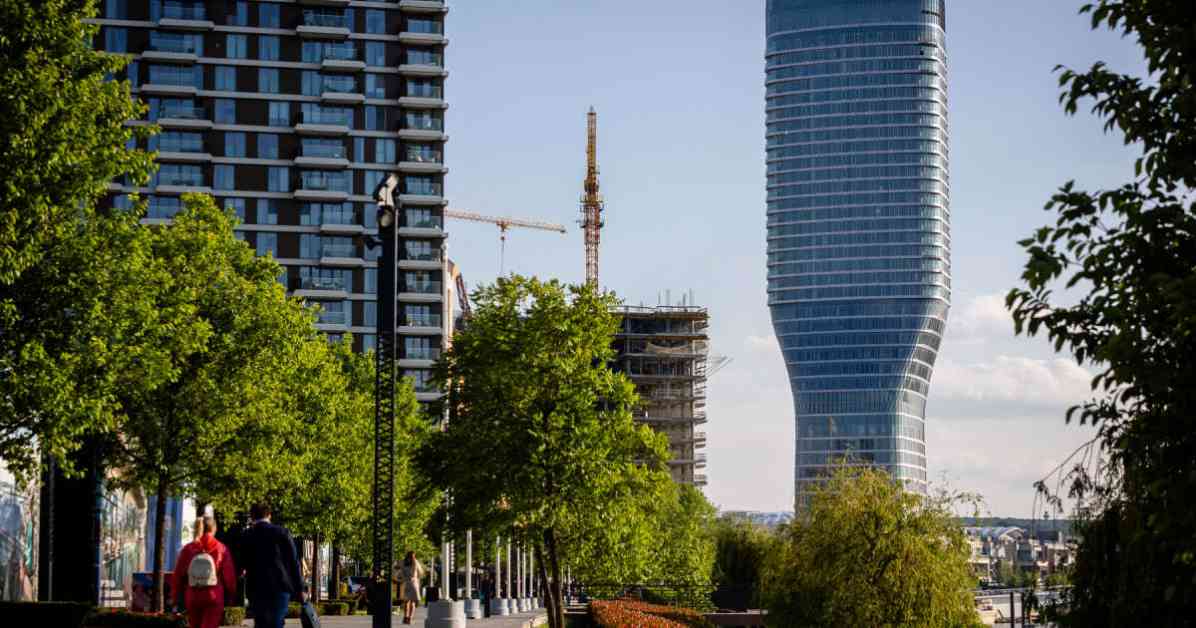A luxurious and ultra-modern business district built along the Sava River, a tributary of the Danube, is causing controversy in the Serbian capital. Opponents denounce an installation that « serves Arab investors » and the regime of Aleksandar Vucic. This report comes from the Hungarian site « Index ».
In a café near the Ministry of Finance, architect Bojan Kovacevic explains the issue. « The Belgrade Waterfront project is like a cancer. It is expanding more and more. If you go to the left bank of the Sava, you will see on one side the silhouette of the 19th-century architecture of the city, on the other side a neighborhood coming out of nowhere that sharply deviates from this heritage. Architecturally, there is and will be no fundamental dialogue between the two styles. For me, this type of architecture is terrible and primitive. Just think about how much Dubai stands out from European architectural traditions. » The retired university professor continues: « Believe me, it is not a matter of being right or left. It does not depend on whether President Vucic and his supporters come from the cultural elite or the lower classes of the population. Our strategic interest was to carefully and correctly use this area along the Sava riverfront, but it only serves Arab investors. » According to him, this investment is an urban disaster for Belgrade, as it increases the number of vacant homes when 10,000 homes are already unoccupied in the city.
The controversy surrounding the Belgrade Waterfront development has sparked outrage among civil society groups and residents. Many are concerned about the impact of this ultra-modern business district on the city’s architectural heritage and urban landscape. Critics argue that the project caters primarily to foreign investors, particularly those from the Arab region, rather than meeting the needs of local residents.
In addition to architectural concerns, there are also worries about the economic implications of the Belgrade Waterfront project. With thousands of vacant homes already in the city, there are fears that the development will only exacerbate the issue and lead to further displacement of residents. The lack of affordable housing options for the local population is a pressing issue that needs to be addressed.
Furthermore, the controversy highlights broader questions about urban development and planning in Belgrade. Many residents feel that their voices are not being heard in the decision-making process and that the interests of foreign investors are being prioritized over those of the local community. This has led to calls for greater transparency and accountability in future development projects to ensure that they benefit the city as a whole.
Overall, the debate surrounding the Belgrade Waterfront development reflects deeper tensions within the city regarding issues of urbanization, cultural heritage, and economic development. It remains to be seen how these concerns will be addressed moving forward and whether there will be greater efforts to involve local residents in shaping the future of their city.

